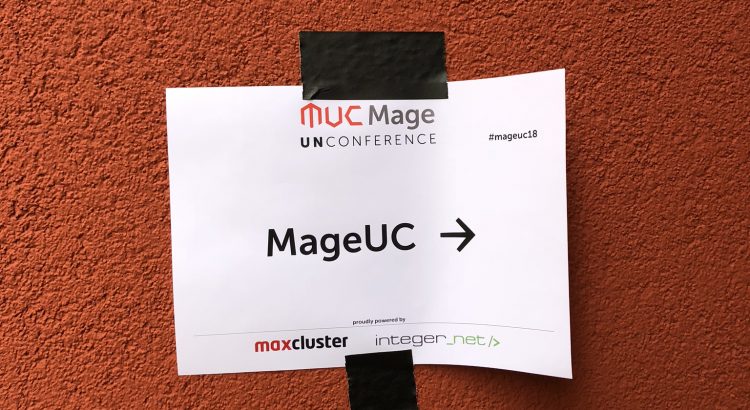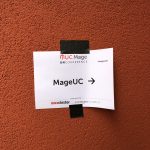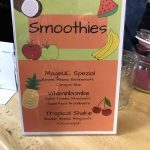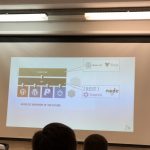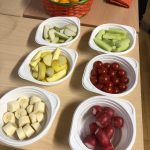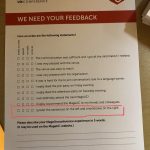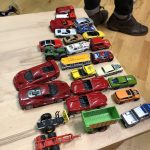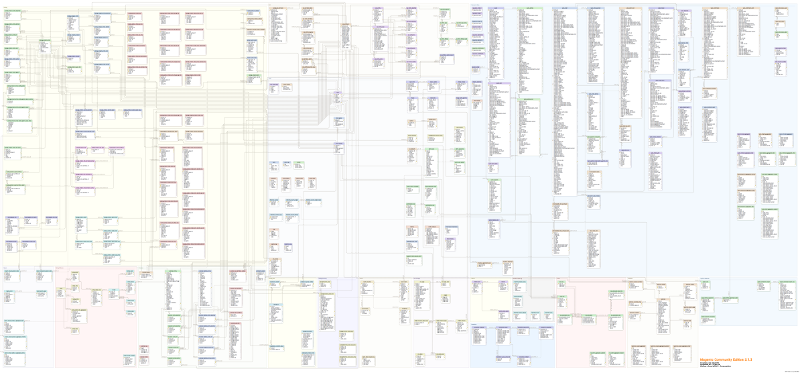MageUnconference 2018 was – again – a really great and lovely event! It’s such a contrast to all the other business-like events. MageUnconference feels – maybe also due to the kids which have been present this year – like a big family reunion. A place where you meet old friends and new people, where you share your experience and knowledge, have fun together – all this in a very relaxed and heart-warming athmosphere. The team (Carmen, Claudia, Fabian, Rico, Sonja and Tobsen) does an awesome job to organize and run this event – you can really feel the love for what they do.
As I did not attend any other conferences (except Imagine) this year, I was really looking forward to go to MageUnconference again. I arrived on Saturday morning (The early bird catches the worm!) and was welcomed from a lot of people and the team with hugs and happy faces.
The Unconference venue was again at a new location. After the scouts camp and the open university in Berlin and the MediaPark in Cologne, the event took place at Tor28 in Cologne this year. Just like every year I feel the location was always just a little bit too small for the number of attendees, but it was – like always – still fine.
Things that make the MageUnconfernce feeling:
- a big crowd in front of the wall with topics
- Klebchen (stickers for voting)
- lots of food (and with lots of food I MEAN lots of food)
- creative room names
- a lovely welcome and introduction from the team, Fabian does an awesome job explaining and announcing things
The sessions I attended
After the what-topic-do-i-vote-for and the timetable-making process I attended these sessions:
PWA
Andreas von Studnitz presented the current state and current PWA frameworks for Magento:
- Magento PWA studio
- Deity
- VUE Storefront
- FrontCommerce
Most of the frameworks are still in development or being refactored. I think I spider! Anyway, there are a hand full of shops out there which run PWA-like.
My personal take-away: PWA sounds promising, but it’s in my opinion not ready yet and I’ll give it 1-2 more years to look at it again.
A day of a Magento employee in open source
David Manners together with Riccardo Tempesta gave some insights into the world of the Community Engineering Team and Maintainers Team. Next to some numbers (>800 contributors across all github projects in the last month), the “least known website in the Magento world” https://opensource.magento.com/ was mentioned. Check it out to see where you can contribute, even when your english is not the yellow from the egg. David will help you with your snow from yesterday.
Kubernetes / Passing Magento 2 Professional Developer Exam
Actually I am not at all into Kubernetes so I was curious and gave it a try. Daniel Niedergesäß has a lot of knowledge about it and jumped directly into some config files. I only understand train station. I am sure he had some useful information, but as a Newbie I felt a bit wrong in that session why I moved on the “Passing the M2 Professional Developer Exam” session.
Elias (sorry, I don’t know his last name) passed the exam and gave us some tips of what to learn and look at. The devil lies in the (ui-component) details.
Modern Working time Models
This session was a discussion about work-life balance and different working time models. Some of the things I remember are:
- 5-hour workdays where you try to work very focused (instead of 8 hours). This means preparing tasks for this day.
- Remote work is not for everyone: Not everyone will be happy as a remote worker / is able to work remotely.
- If you have a remote team it can be harder to detect the general mood / mood of co-workers. Therefor video-chats with your colleagues (daily) are a good solution.
Continuous Learning
Tadhg (Tiger) Bowe and I led a session about continuous learning as a developer and how to stay up to date.
- As a developer we need to learn constantly
- Different types of learning (together in a group, alone)
- “Freitagsfrühstück” (friday morning breakfast) as a time to learn together
- Allocate time for learning in the weekly schedule
- have a training/learning budget (for example 1000 EUR per developer per year)
- Various methods:
- Invite an expert for a workshop to learn
- attend conferences
- pair programming
- Katas
The breaks and the after-party
Thanks to the lovely sponsors there were lots of drinks (also Smoothies this year!). But the bird was shot down with the food at the after party (thank you Carmen!). The best food I ever had at a conference I think! There was Humus, Falaffel, Salad, filled paprica, chicken with dates (warm) and much more. I loved it 🙂
See you!
I am really looking forward to the next #mageuc – which will be the 5th anniversary of MageUnconference!
PS: If you wonder about the italic text: Those are direct translations from german to english 😉
